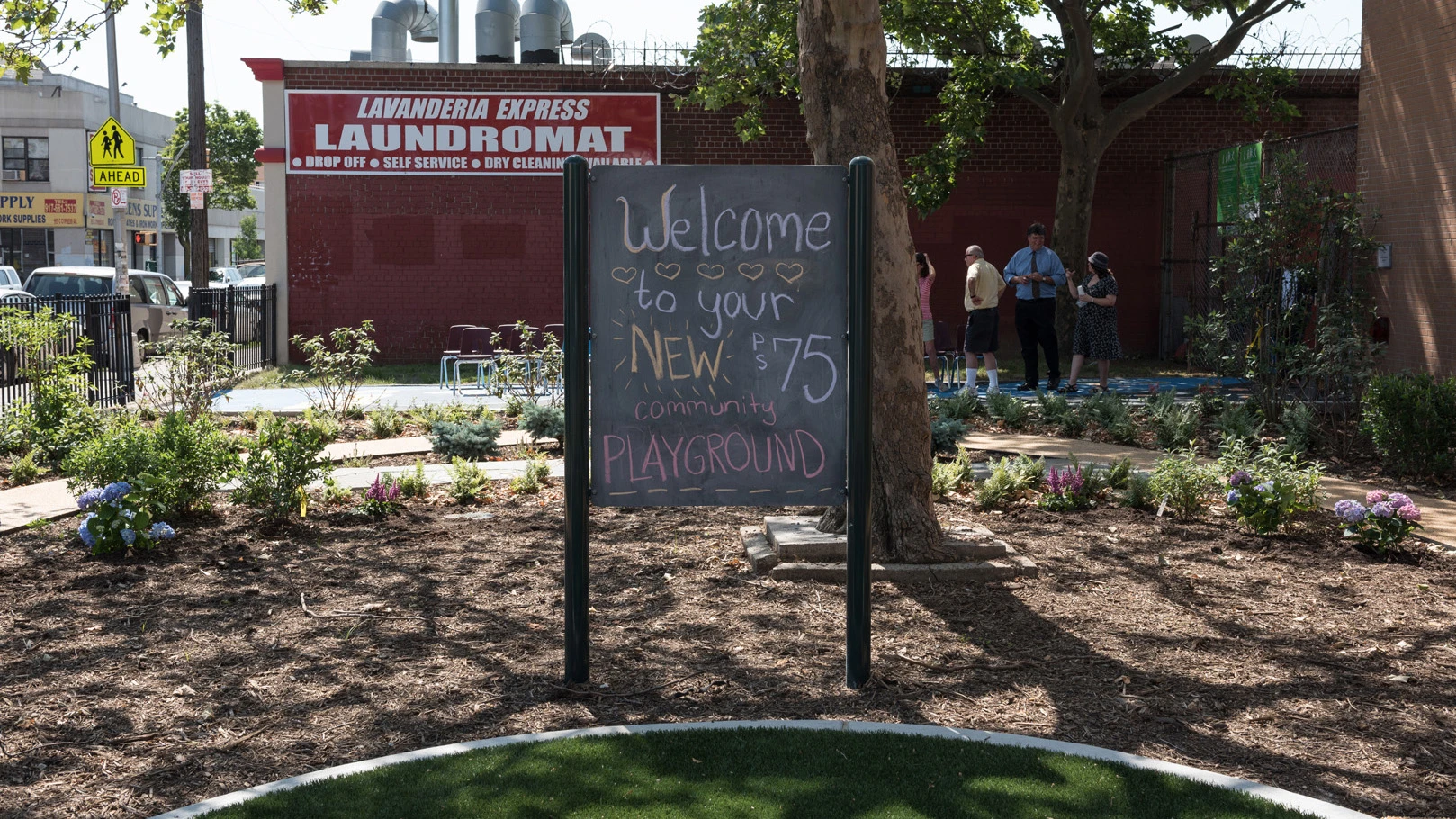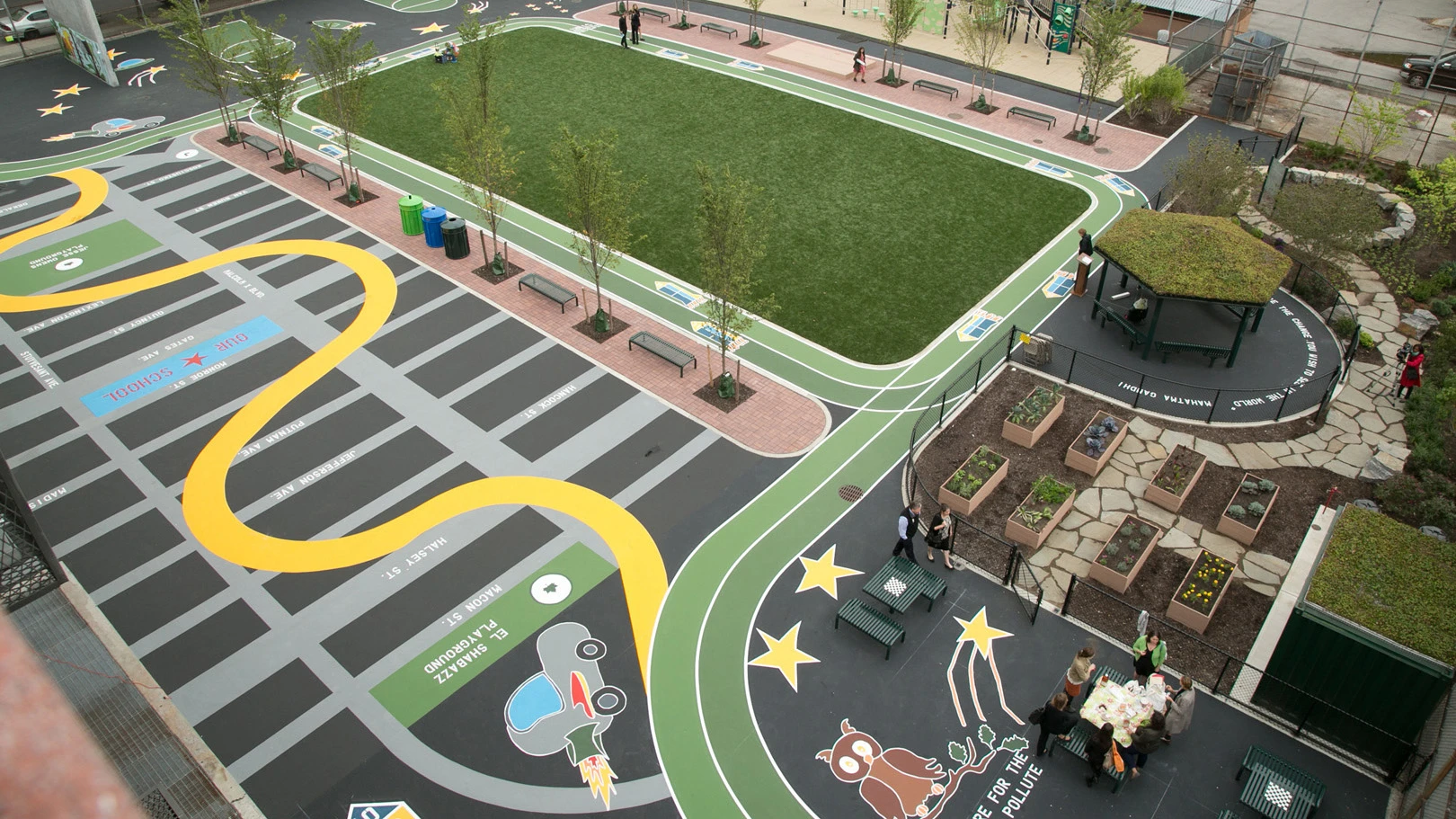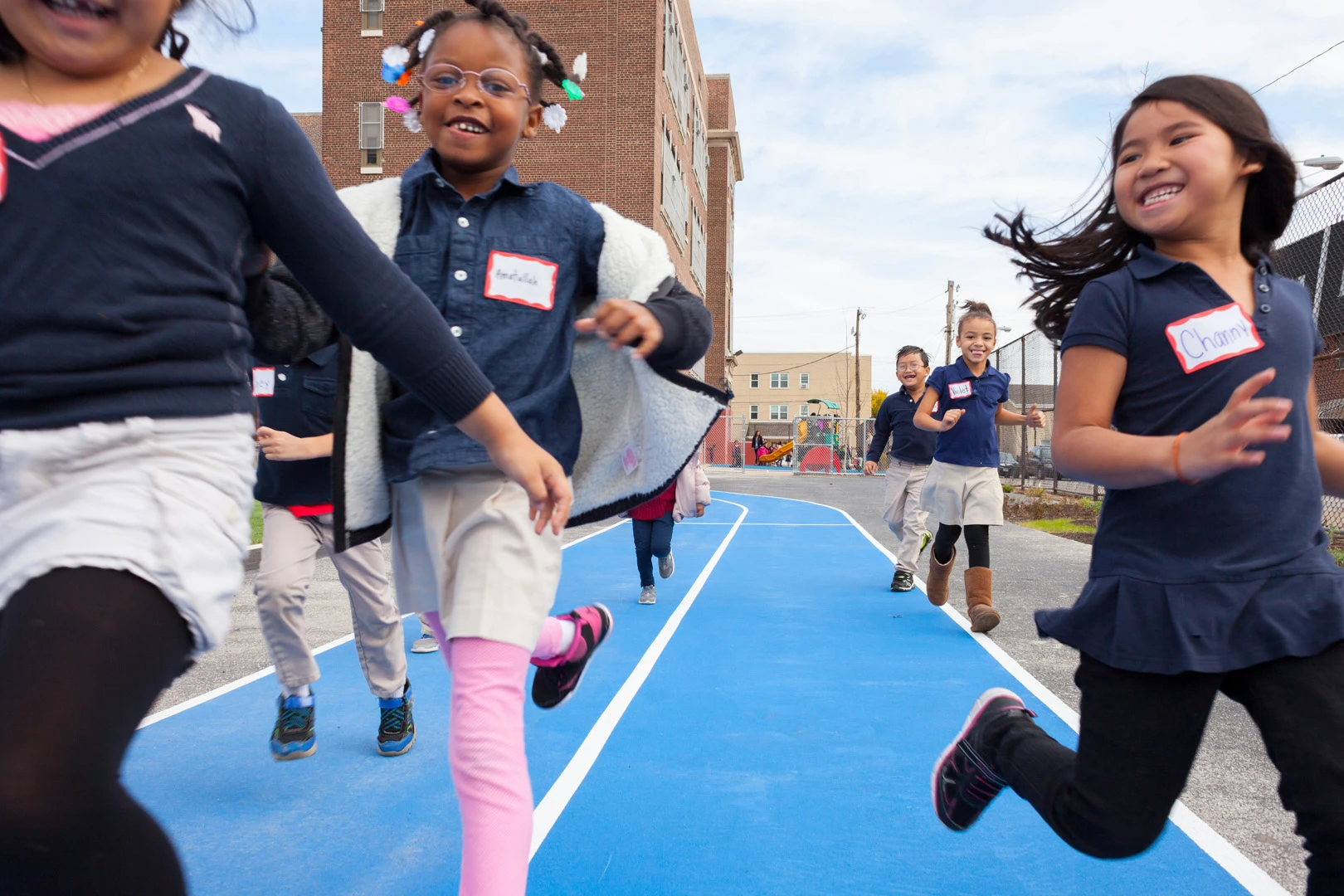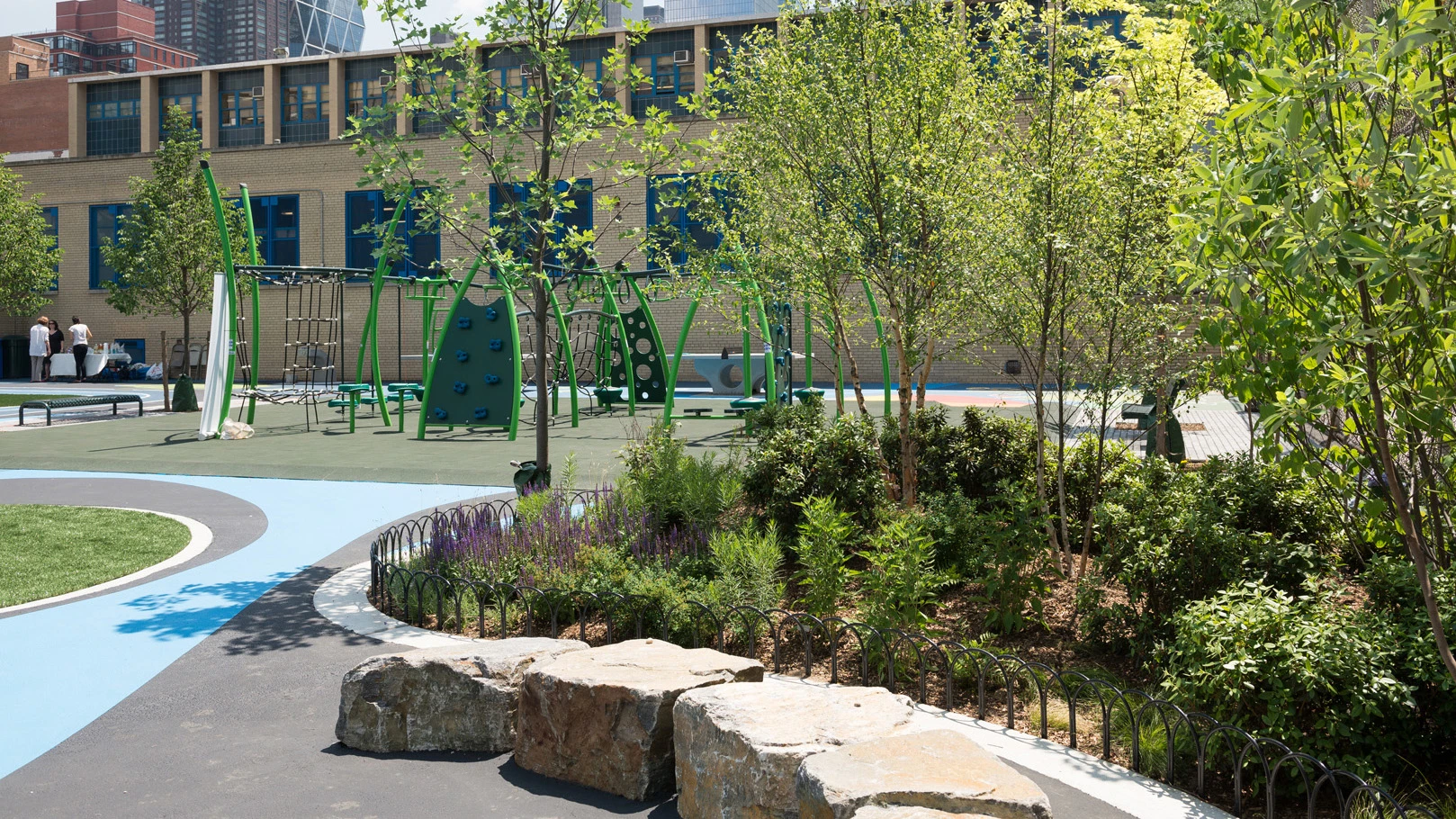At a public elementary school in Hell’s Kitchen in New York City, a playground that used to be a barren asphalt lot is now a green space filled with plants and trees—and when school isn’t in session, it’s open to anyone in the neighborhood to use as a park.

It’s one example of a transformation happening at schools across the country, and a new report finds that it could be a good way to give people access to parks in neighborhoods where green space is lacking. The Trust for Public Land, a nonprofit that helps schools and cities create “shared-use” agreements for playground space, calculated that if all schoolyards in the U.S. were opened to the public during nonschool hours, nearly 20 million Americans who don’t currently live near parks would suddenly be a short walk from one.

In a city east of Los Angeles called Baldwin Park, for example, only around a third of residents live within a 10-minute walk of a park (in a park-filled city like Washington, D.C., by contrast, 97.5% of residents live near parks). If local playgrounds were converted to shared use as parks, the number of residents in Baldwin Park with easy park access would jump to more than 90%.

The nonprofit has worked on projects in cities from Atlanta to Oakland, helping cities and schools make agreements for issues like who will perform maintenance and who will pay for it. Typically, school playgrounds in the areas that lack park space are themselves often lacking in greenery, so the nonprofit works with the community on a design to transform what are often asphalt lots into something more verdant. “The need is significant,” says Danielle Denk, a program manager at The Trust for Public Land. “The communities where these [programs] are happening often are areas where there’s not a lot of investment, where the students really could benefit more from the clean air and the shade and, and just the sense of soft ground underfoot and a place to play.”

Converting the playgrounds can also help fight urban heat as cities redesign themselves to better deal with climate change. In Paris, barren paved schoolyards that radiate heat on hot days are being converted into green space that can help cool neighborhoods. In Dallas, where temperatures often break 100 degrees, more than 400,000 residents currently don’t have a park nearby, and the city has a similar opportunity. The nonprofit is partnering with a local nonprofit, the Texas Tree Foundation, to build parks at public schools throughout the city.
Recognize your brand’s excellence by applying to this year’s Brands That Matter Awards before the early-rate deadline, May 3.
